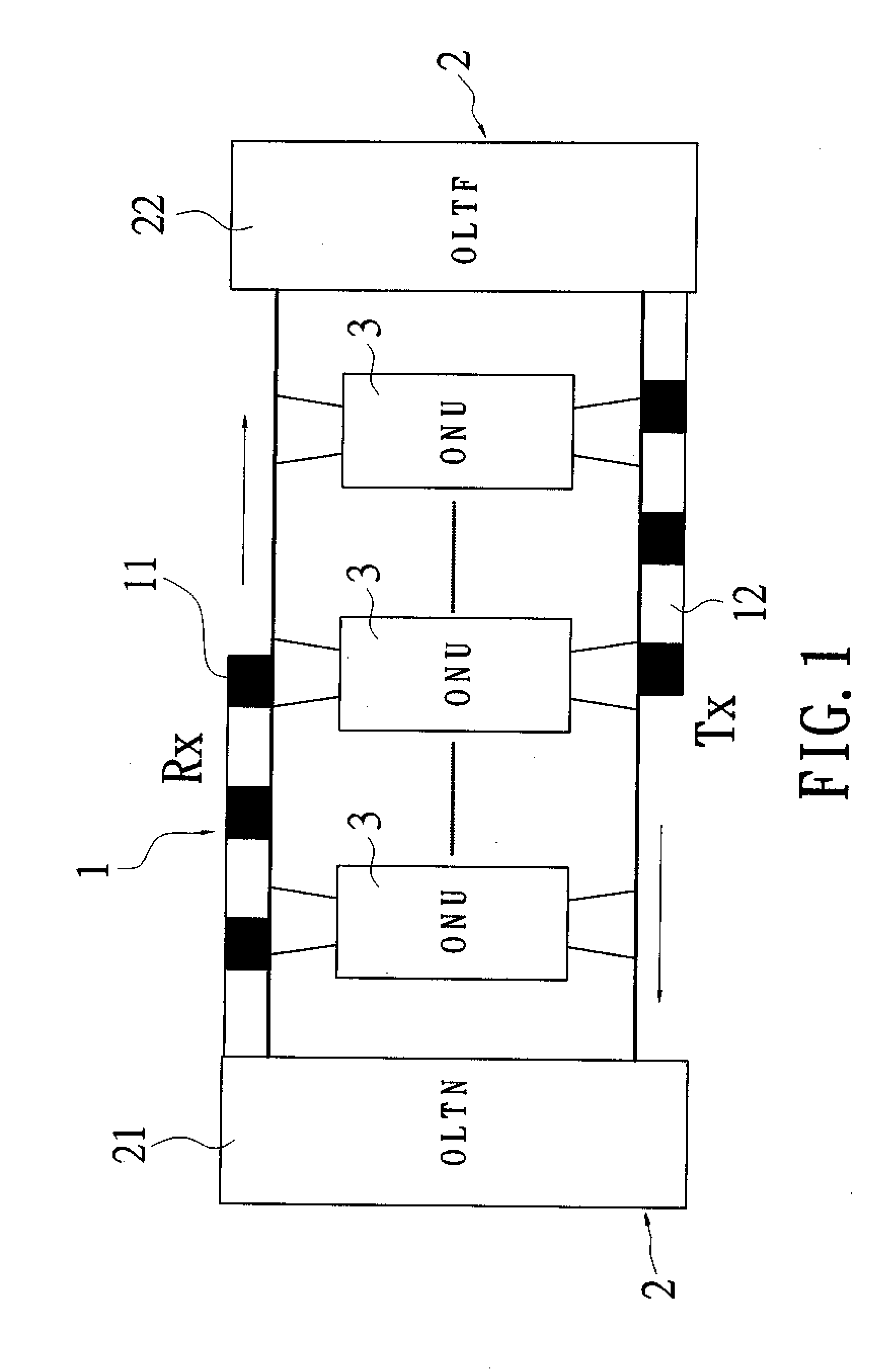Bus-based optical network system
a bus-based optical network and bus-based technology, applied in the field of bus-based optical network systems, can solve the problems of low bandwidth efficiency, high installation and maintenance cost, and the barrier to globalization of ftth networks, and achieve the effect of efficient distribution of tdma channel capacity, high access of onu, and high paymen
- Summary
- Abstract
- Description
- Claims
- Application Information
AI Technical Summary
Benefits of technology
Problems solved by technology
Method used
Image
Examples
Embodiment Construction
[0016]Refer to FIG. 1, a schematic drawing showing structure of a bus-based optical network system of the present invention is revealed. The optical network system includes optical fibers 1, optical line terminals (OLTs) 2, and a plurality of optical network units (ONUs) 3.
[0017]One of optical fibers 1 is a transmitting bus (T Bus) 12 and the other is a receiving bus (R Bus) 11. The T Bus 12 is an upstream channel while the R Bus 11 is a downstream channel.
[0018]The optical line terminal (OLT) 2 consists of two parts. One part is arranged in or near central offices (COs) and is called the near part of an optical line terminal (OLTN) 21 while the other part terminates the optical fiber 1 at the position far away from the central office (CO) and is called the far part of an optical line terminal (OLTF) 22. Both the OLTN 21 and the OLTF 22 include a slot generator and a slot terminator. The flow of TDMA slots on the R Bus 11 is sent by the slot generator of the OLTN 21 and sinks into t...
PUM
 Login to View More
Login to View More Abstract
Description
Claims
Application Information
 Login to View More
Login to View More - R&D
- Intellectual Property
- Life Sciences
- Materials
- Tech Scout
- Unparalleled Data Quality
- Higher Quality Content
- 60% Fewer Hallucinations
Browse by: Latest US Patents, China's latest patents, Technical Efficacy Thesaurus, Application Domain, Technology Topic, Popular Technical Reports.
© 2025 PatSnap. All rights reserved.Legal|Privacy policy|Modern Slavery Act Transparency Statement|Sitemap|About US| Contact US: help@patsnap.com



